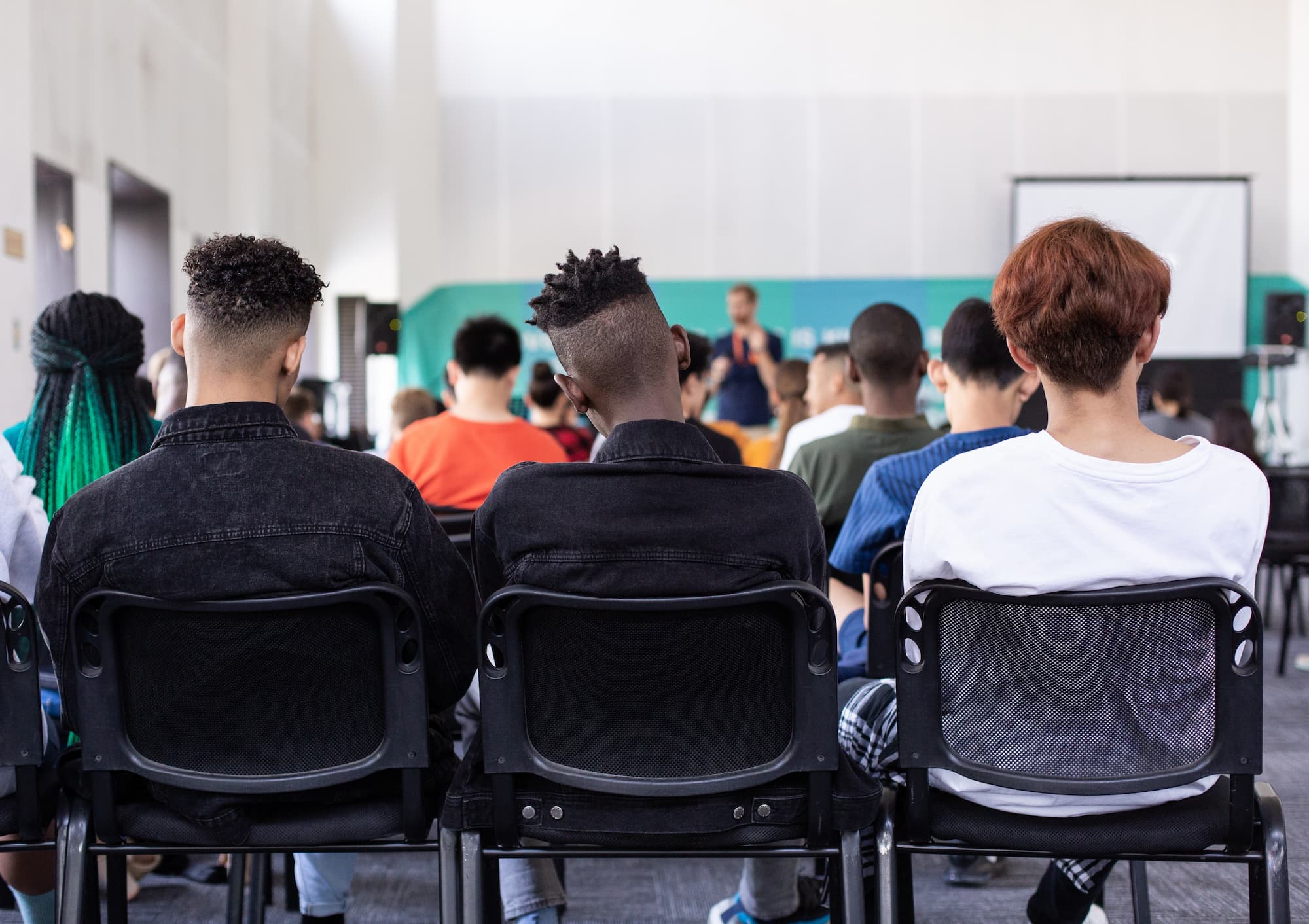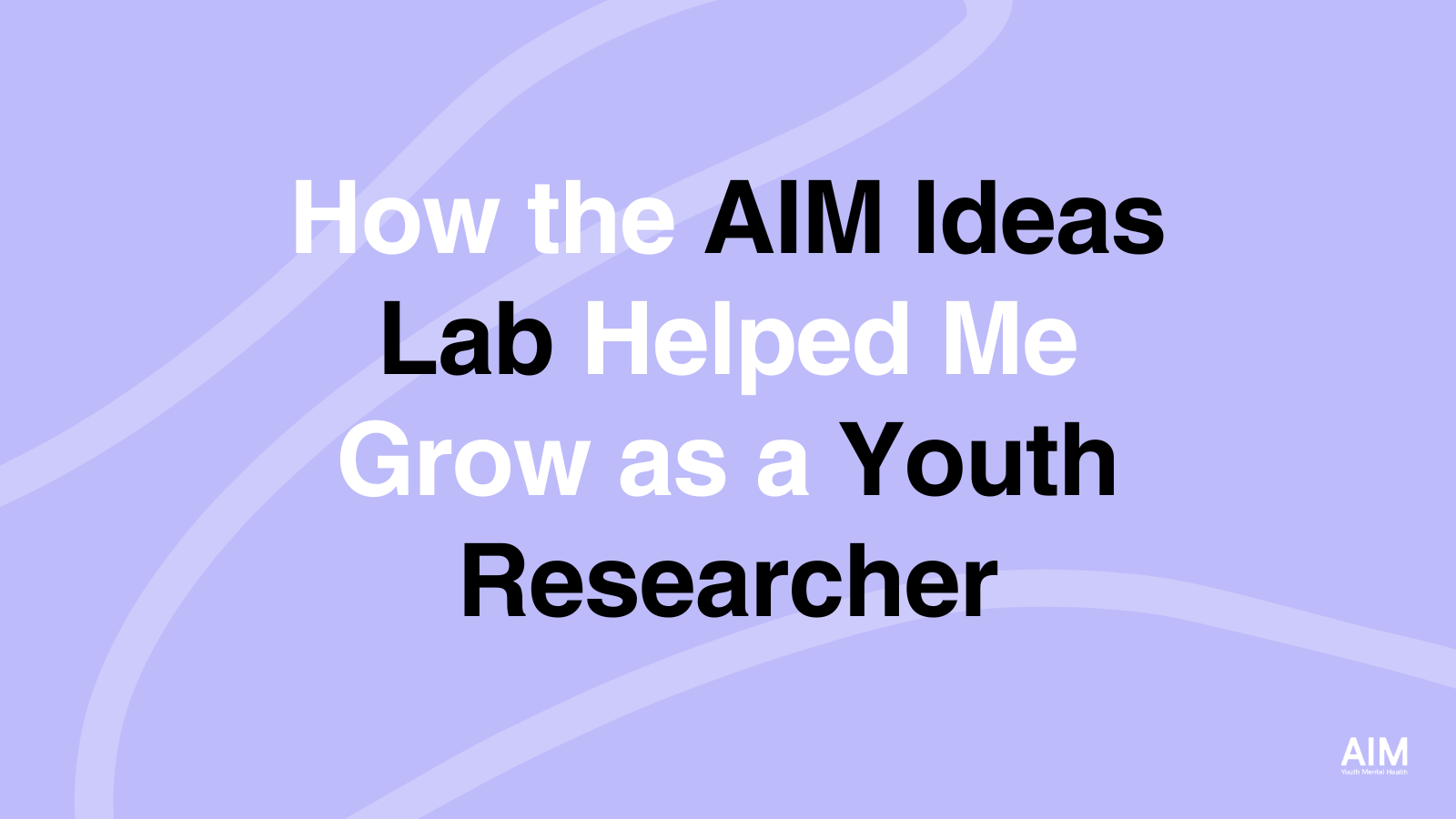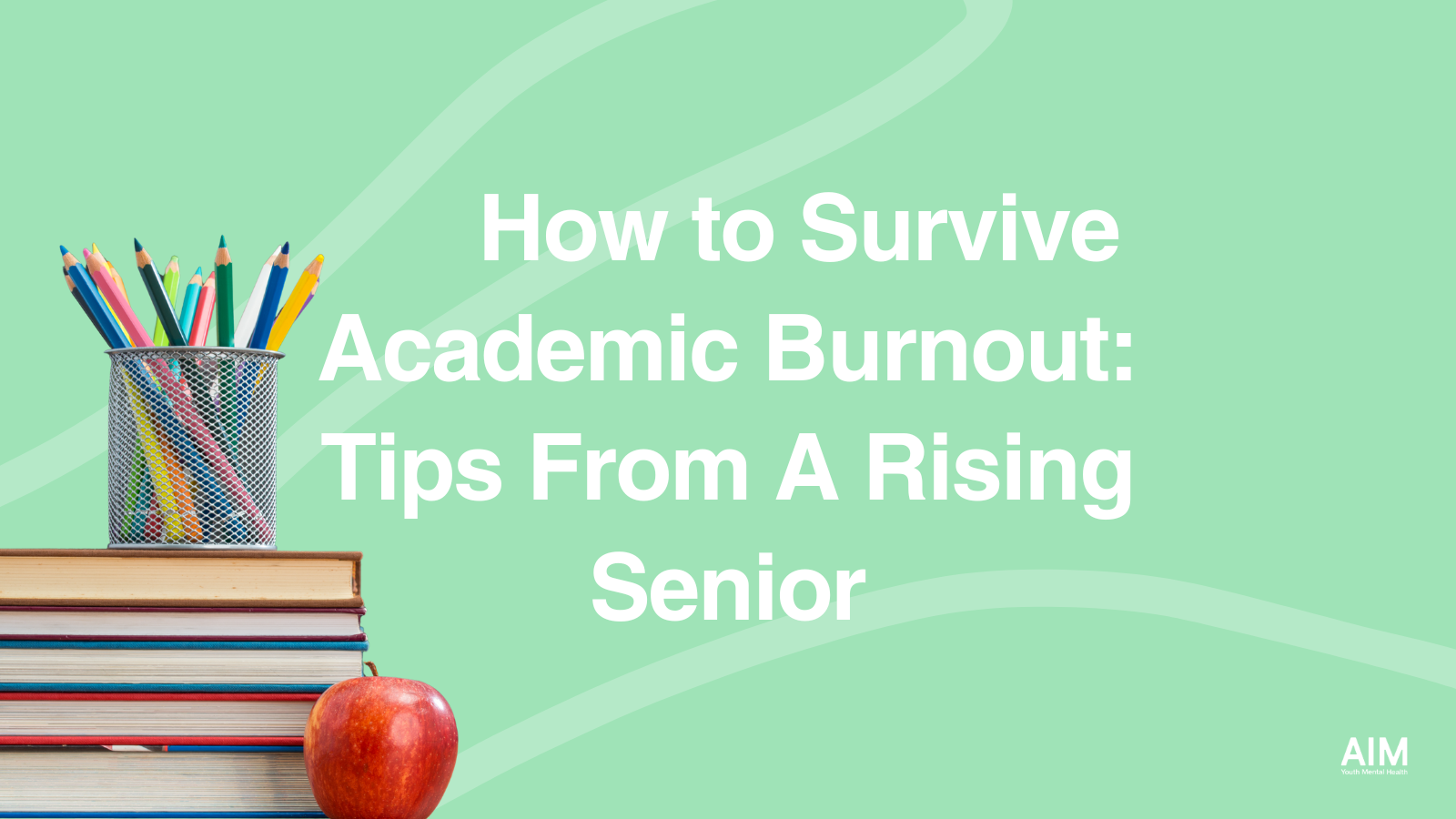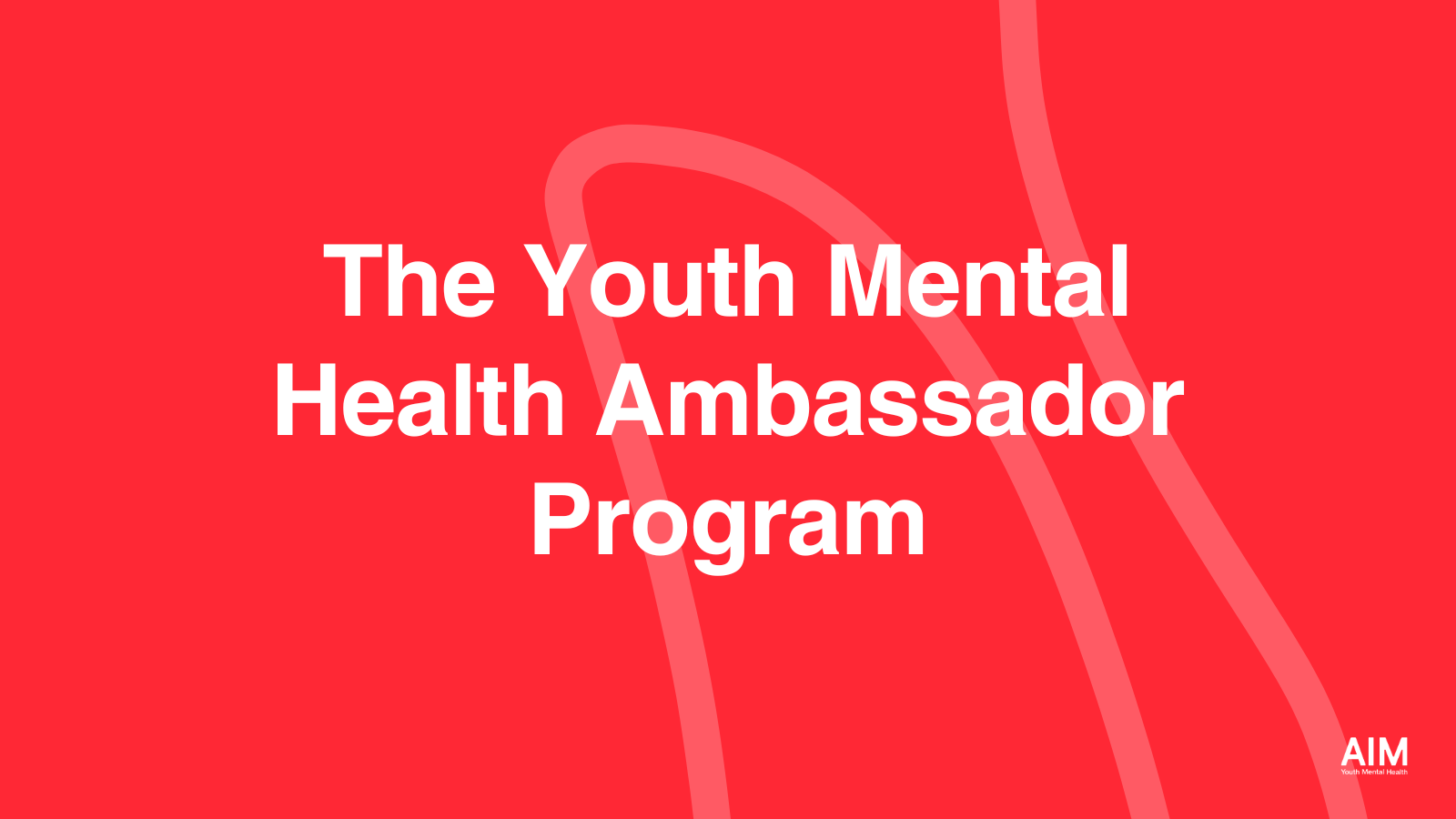With the arrival of another school year, it’s more apparent than ever how young people are facing challenges that even adults aren’t sure how to handle. While some students may be eager to get back to see their friends and dive into new routines and activities, others may be feeling some serious trepidation about who they are going to eat lunch with and how they are going to make it through AP World History amidst the backdrop of a lingering pandemic, gun violence, and social unrest. Understandably so, it’s important for youth and parents alike to keep in mind the varying emotions that come alongside another term.
Stress, social anxiety, depression, and low self-worth are just some of the major challenges for teens and adolescents—as outlined in our AIM Ideas Lab 2023 Report. After all, 17% of youth (ages 6-17) experience a mental health disorder, with half of all mental health disorders beginning in individuals’ mid-teen years and 75% of mental health conditions presenting by age 25. In addition to these harrowing statistics, as of June 2022, 56% of 11-13 year olds who took a depression screen in the U.S. reported experiencing frequent suicidal ideation, which was the highest rate of any age group.
Youth are going back to school amongst a throng of social, political, and environmental issues that previous generations may not even be able to relate to. Therefore, setting you and your family up for a mentally healthy school term involves intentional space holding and integration into daily life. Today, we’re helping you with some great places to start: stress management, structured routines, and connection to community.
The Optimal Level of Stress
Between a changing schedule, new teachers, new social dynamics, academic demands, and extracurricular activities—the pressure students feel these days can certainly pile on the stress. Unfortunately, that stress can bring with it some significant harm to academic performance. Unmanaged stress can lead to attention and memory challenges, social withdrawal, anxiety, emotional exhaustion, and higher absences.
Luckily, research has shown that coping strategies and self-efficacy are two of the most impactful factors to promoting student engagement, persistence, and academic success. Particularly interesting, being flexible with coping strategies is one sure-fire way to improve a student’s self-efficacy or belief in their capacity to act in the ways necessary to reach specific goals. It’s not enough to simply engage in self care; caring for ourselves and believing in our ability to accomplish our goals takes open-mindedness and adaptability in our self care routines.
It’s worth it to mention that school stress may not always be an issue since stress itself isn’t always an issue. In fact, some stress is good! Stress has the ability to build our resilience and is necessary for our growth and peak performance, that is, when it feels manageable. With feelings of low self-confidence plaguing many of our youth, the ability to work through manageable stress and accomplish tasks can help to build self trust and conviction. It’s when that stress reaches the other side of the Stress Curve—into unmanageable territory—that requires bringing ourselves back to an optimal level of stress through coping.
Whether responding to unmanageable stress or participating in routine self care, one stress management practice that every smartphone-attached-youth can get behind is keeping an active Coping Strategies List in the Notes App.
Waking up to a stressful day ahead is already overwhelming enough without the added pressure of figuring out how to take care of yourself that day. By keeping an ongoing list of coping strategies, figuring out how to care for yourself becomes one less thing to worry about.
Each time a friend mentions their favorite unwind activity or a self care vlog graces your FYP, jot down the coping ideas. Don’t simply include the ones that appeal to you, throw in those you wouldn’t necessarily gravitate towards as well. The truth about coping strategies is that the same ones won’t work for everyone. Even on an individual basis, what works best for us will inevitably change. Having a list allows you to keep a flexible mindset on days when you need to try something new to shake off the stressful cobwebs.
Connection To Community Is Of The Utmost Importance
While smartphones are great for self care hacks like keeping a Coping List, they are less successful in fostering social connection. One global study found school loneliness to be correlated with increases in smartphone and internet use–when countries reached a point where half of the teen population had access to smartphones, loneliness levels began to rise. Although youth are used to interacting with their peers in a digital space, youth mental health remains deeply impacted by social isolation.
These findings are replicated in the classroom as well. Just a few months into the pandemic in June 2020, a study found nearly 30% of high school youth didn’t feel at all connected to teachers, classmates, or the school community. With social isolation as a major risk factor in developing a mental health condition, like depression, remaining connected to community is more crucial than ever.
Hopefully, schools are fostering a classroom community and helping students meet over shared interests. However in addition to school efforts, facilitating connection among youth can start in the home as well. As AIM’s Ideas Lab Report shows, teens report that negative home environments, pressure from parent(s) or guardian(s), and family not acknowledging mental health issues are some of the top factors that worsen youth mental health. In response, the findings recommendation was to encourage parents to participate in family education programs about youth mental health (consider this your reminder to sign up for our Youth Mental Health First Aid Trainings) to help eliminate stigma at home.
While parents may feel called to encourage community building behaviors (like getting involved in activities outside of school or trying to start a conversation with one new person each day), it may behoove them to simply hold space for the conversation itself.
Surveyed teens expressed that they just want to be heard and are not always looking for solutions. Practicing active listening and open communication can help families to feel more connected, support destigmatization efforts in the home, and can even model emotion identification, bolstering youths’ desire to be self-reliant when it comes to their mental health by leading by example.
Make The Time For Mental Wellness
In the same way education aims to offer support through structured routine, developing routines can be particularly supportive for families experiencing adolescent mental illness. Encouraging youth to develop routines has several advantages: a sense of stability, enhanced time management, improved self-care, and better focus and productivity. While delightfully positive, establishing structure and routine may feel easier said than done for many young people.
Teens are experiencing immense pressure due to academics and feel like they don’t have the time to address their mental health. Young people are citing lack of sleep and time for self-care as some of the top factors that worsen youth mental health, with lack of time the top reason for not socializing more with their peers and having a sense of community.
Making the time for self care and connection as a family can offer youths a built-in structure of care. Relieving the individual pressure of time management for self-care is another fantastic way for parents and caregivers to get involved in their youth’s mental wellness. When practicing coping strategies together—from a “rose and thorn” dinner routine to family walks around the block—family routines act as a connection-fueled, two-for-one supportive factor in youth mental wellness. In fact, research shows that family routines function as an indicator of wellbeing for the adolescent, providing stability in times of stress, protecting their wellbeing, and supporting the expression of identity.
Rather than asking our youth to mitigate self coping on their own schedule, baking mental wellness into our family conversations, routines, and quotidian moments impact their mental health exponentially. There is no “end” to caring for our mental health—it’s a lifelong journey that requires flexibility, open-mindedness, and commitment. If one thing is for certain, it’s that this never ending process is made a lot easier when we practice it together. This back to school season, bring your family in on the process.





